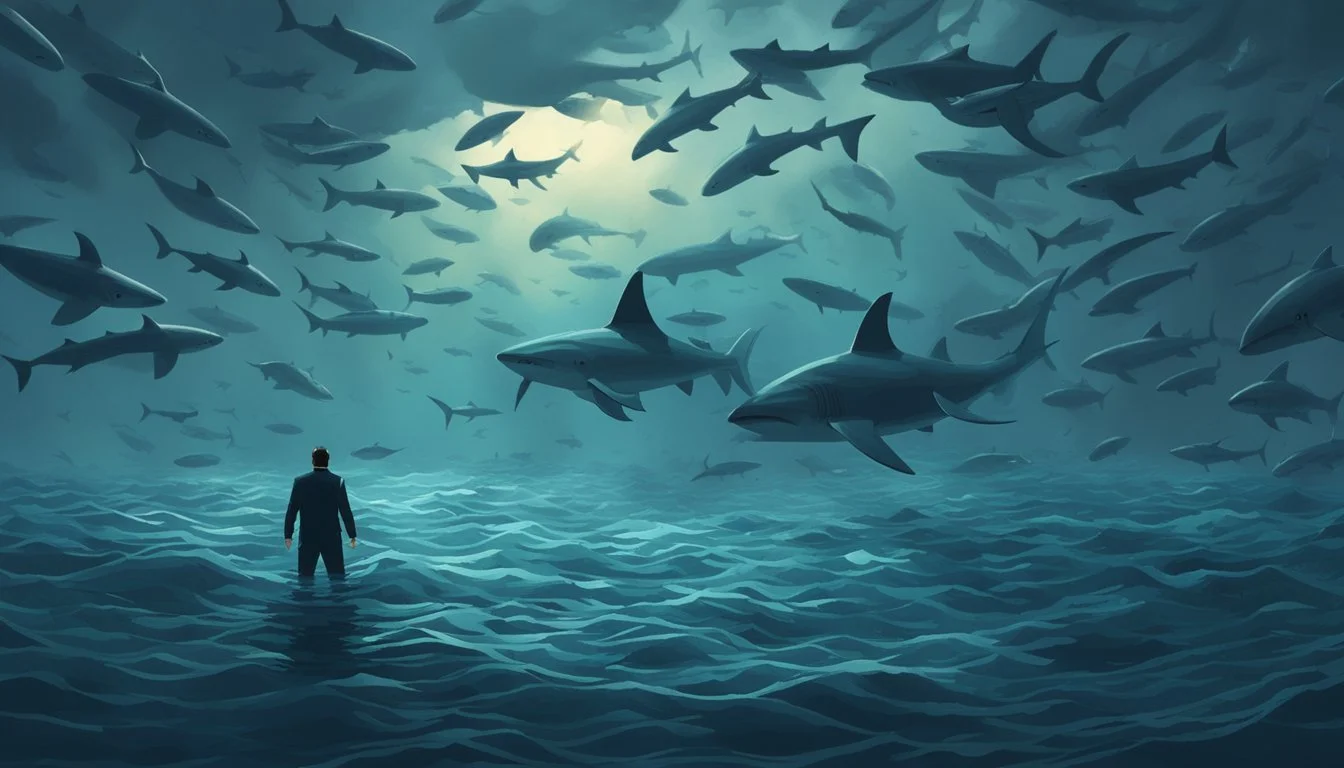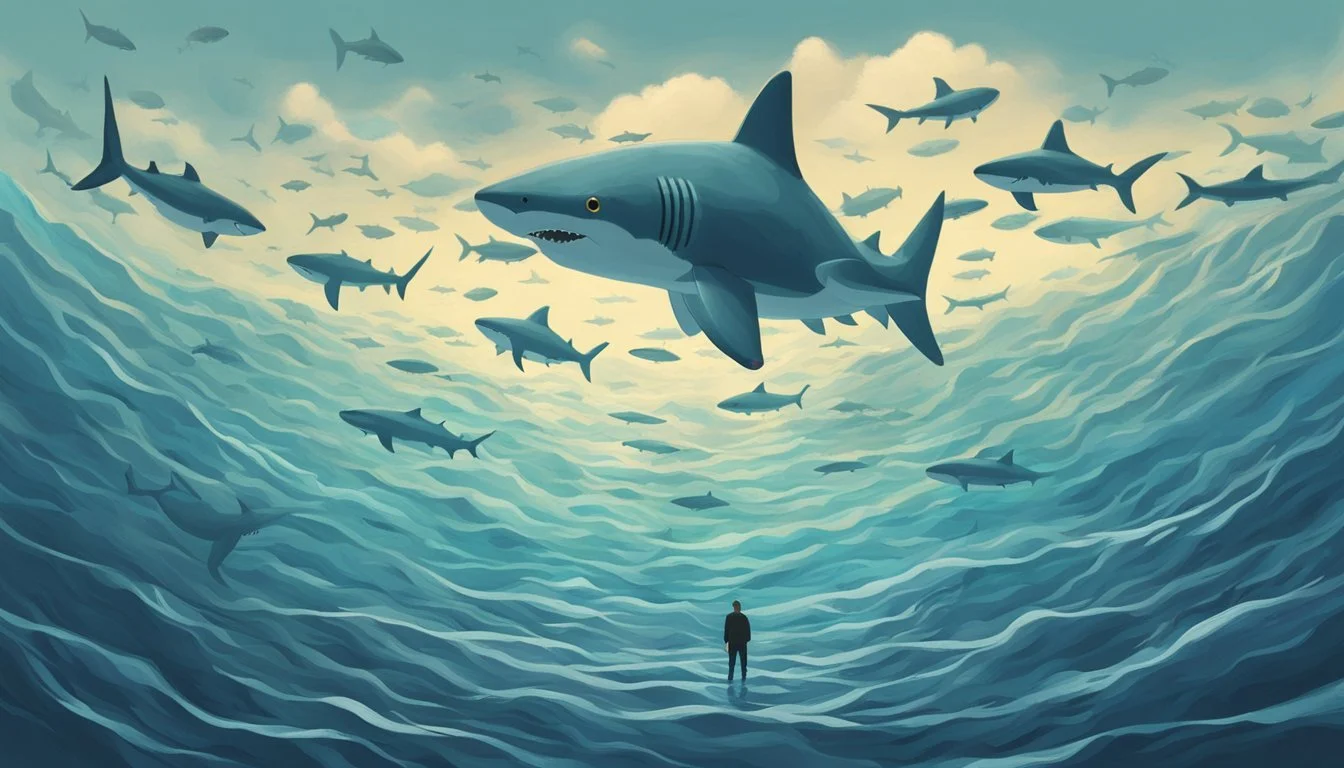Surviving Sharks
Open Water's Harrowing True Events Revealed
The 2004 film "Open Water" terrified audiences with its harrowing tale of a couple stranded at sea, surrounded by sharks. While the movie took some creative liberties, it drew inspiration from a real-life tragedy that occurred in 1998. Tom and Eileen Lonergan, experienced scuba divers, vanished during a diving trip to Australia's Great Barrier Reef when their tour boat accidentally left them behind.
The Lonergans' disappearance sparked changes in diving industry safety protocols and captured the public's imagination. Unlike the film's depiction, there is no evidence that sharks attacked the couple. Their fate remains a mystery, as their bodies were never found. The search for the Lonergans lasted several days and uncovered only a few of their personal belongings.
The true story behind "Open Water" highlights the dangers of ocean exploration and the importance of proper safety measures. While shark attacks are rare, being stranded in open water presents numerous risks, including dehydration, exposure, and exhaustion. The Lonergans' story serves as a sobering reminder of the ocean's power and the need for vigilance when venturing into its depths.
The True Event Behind 'Open Water'
The movie "Open Water" drew inspiration from a real-life tragedy that occurred in 1998. It centers on an American couple who were left stranded in shark-infested waters off the coast of Australia during a scuba diving excursion.
Origins of the Story
"Open Water" is based on the disappearance of Tom and Eileen Lonergan. The couple, both experienced divers, were on a trip to the Great Barrier Reef in Queensland, Australia. They had been living abroad and decided to embark on this diving adventure as part of their journey back to the United States.
The filmmakers took the core elements of the Lonergans' story and adapted them for the screen. While the movie dramatizes certain aspects, it maintains the central premise of a couple abandoned at sea.
The Tragic Incident of Tom and Eileen Lonergan
On January 25, 1998, Tom and Eileen Lonergan joined a group scuba diving trip to St. Crispin's Reef. The dive boat, Outer Edge, departed from Port Douglas with 26 passengers and crew members.
After completing their dive, the Lonergans surfaced to find the boat had left without them. A miscount of passengers led to their absence going unnoticed. It wasn't until two days later that their disappearance was discovered when bags containing their belongings were found on the boat.
A massive search and rescue operation was launched, but no trace of the couple was ever found. The incident led to significant changes in diving industry safety protocols and sparked public interest in the dangers of ocean activities.
Cinematic Adaptation
The film "Open Water" transformed the Lonergans' tragic story into a harrowing cinematic experience. It captured the isolation and terror of being stranded at sea while taking creative liberties to heighten the drama.
Development of the Film
Writer-director Chris Kentis and producer Laura Lau were inspired to make "Open Water" after learning about the Lonergans' disappearance. They saw potential in the story's inherent suspense and psychological horror. The couple invested their own money and spent years developing the project.
Kentis and Lau aimed for authenticity, opting to shoot on location in the ocean with real sharks. This decision set "Open Water" apart from typical Hollywood productions and posed unique challenges.
The filmmakers cast relatively unknown actors Blanchard Ryan and Daniel Travis as Susan and Daniel, the film's protagonists. This choice added to the movie's realistic feel and helped viewers imagine themselves in the characters' terrifying situation.
Challenges in Filmmaking
Shooting "Open Water" presented numerous obstacles. The cast and crew battled seasickness, unpredictable weather, and the constant threat of real sharks during filming. Scenes were shot in short bursts to ensure safety.
The actors had to perform while treading water for hours, adding to the physical and emotional strain. They wore chain mail under their wetsuits for protection from sharks, which sometimes came within feet of them during takes.
Budget constraints meant limited equipment and a small crew. This forced the filmmakers to be creative with their resources and rely on natural lighting and handheld cameras to capture the action.
Realism and Creative Liberties
"Open Water" blended fact and fiction to create a compelling narrative. The film maintained the core premise of a couple abandoned at sea but altered details for dramatic effect.
Unlike the Lonergans, whose fate remains unknown, the movie provides a definitive ending for its characters. It also compressed the timeline, focusing on a shorter period to heighten tension.
The filmmakers incorporated real shark behavior into the story, consulting with experts to ensure accuracy. However, they amplified the shark encounters for cinematic impact, creating a more immediate sense of danger than what likely occurred in the real incident.
Shark Interactions
The film "Open Water" portrays shark encounters in a way that blends fact and fiction. While some aspects accurately reflect shark behavior, others were dramatized for cinematic effect. Understanding the reality of shark interactions can dispel common misconceptions.
Shark Behavior in 'Open Water'
In the movie, sharks are depicted as aggressive predators circling the stranded divers. This portrayal exaggerates typical shark behavior. Most shark species are not naturally inclined to attack humans. The film shows multiple sharks attacking simultaneously, which is rare in real life.
Sharks in "Open Water" are seen bumping and nipping at the divers. This behavior, known as "test biting," does occur in nature. Sharks use their mouths to investigate unfamiliar objects. However, the frequency and intensity of these interactions in the film are heightened for dramatic effect.
The movie accurately portrays sharks being attracted to blood in the water. This is based on their acute sense of smell, which can detect blood from great distances.
Myths vs. Facts About Sharks
Myth: Sharks actively hunt humans. Fact: Most shark species avoid human contact and prefer their natural prey.
Myth: All sharks are dangerous. Fact: Only a few shark species are responsible for most human attacks.
Sharks do not view humans as a primary food source. Most attacks are believed to be cases of mistaken identity or curiosity. Shark encounters rarely result in fatalities.
Contrary to popular belief, sharks don't need to constantly swim to breathe. Some species can rest on the ocean floor and pump water over their gills.
Shark populations are declining due to overfishing and habitat destruction. Many species now face extinction risks, highlighting the need for conservation efforts.
Survivor Accounts and Safety Measures
Shark encounters can be survived with proper knowledge and preparation. Diving operators have implemented strict safety protocols to prevent incidents like the Lonergans' disappearance.
Strategies to Survive a Shark Encounter
Stay calm and maintain eye contact with the shark. Slowly back away towards a boat or shore if possible. If attacked, target the shark's sensitive areas like eyes and gills. Use any available object as a weapon or shield.
Play dead as a last resort if the shark is circling. Many survivors report that sharks often lose interest after an initial exploratory bite.
Immediate first aid is crucial for survival. Apply pressure to stop bleeding and seek medical attention as soon as possible.
Diving Safety Protocols
Dive operators now use computerized headcounts and wristbands to track divers. Buddy systems are strictly enforced, with divers paired and responsible for each other's safety.
Boats carry emergency locator beacons and conduct multiple roll calls. Dive sites are logged with coast guards before departure.
Divers are advised to:
Carry personal location devices
Learn dive site layouts
Set meeting points and times
Bring brightly colored gear for visibility
These measures aim to prevent stranding and ensure quick rescue if needed.
Public Reception and Impact
"Open Water" made waves in Hollywood and beyond, garnering attention for its innovative filmmaking and gripping story. The movie's success at the box office and with critics propelled it into the cultural zeitgeist, influencing future shark-themed films and ocean-based thrillers.
Box Office and Critical Reception
"Open Water" was a surprise hit at the box office, grossing over $55 million worldwide against a modest budget of $500,000. Critics praised the film's realistic approach and tension-building techniques. Roger Ebert gave it 3.5 out of 4 stars, calling it "a haunting, riveting film."
The movie earned an 72% approval rating on Rotten Tomatoes, with many reviewers highlighting its psychological horror elements. Some critics noted the film's documentary-like feel, which added to its authenticity and impact on audiences.
Cultural Impact of the Film
"Open Water" revitalized the shark thriller genre, paving the way for films like "The Shallows" and "47 Meters Down." Its success prompted renewed interest in low-budget, high-concept horror movies.
The film raised awareness about ocean safety and the potential dangers of scuba diving. It led to discussions about dive boat protocols and the importance of proper headcounts.
"Open Water" also influenced reality TV shows and documentaries focused on survival situations. Its raw, unpolished style became a template for found-footage horror films in subsequent years.
Conservation Efforts Post-'Open Water'
The release of "Open Water" sparked renewed interest in shark conservation. Public perception shifted as people gained a deeper understanding of these marine predators and their importance to ocean ecosystems.
Influence on Shark Conservation
"Open Water" prompted increased funding for shark research and protection initiatives. Marine biologists saw a surge in support for their work studying shark behavior and habitats. Conservation groups leveraged the film's popularity to advocate for stricter fishing regulations and marine protected areas.
Several countries implemented new laws banning shark finning and establishing shark sanctuaries. Organizations like the Shark Trust and Shark Angels expanded their educational programs, reaching millions with messages about shark conservation.
Changes in Public Perception
The film challenged the "man-eating monster" stereotype of sharks. Viewers began to see these creatures as vital parts of marine ecosystems rather than mindless killers. This shift led to greater public interest in shark ecology and conservation.
Media coverage of sharks became more nuanced, often highlighting their vulnerability to overfishing and habitat loss. Shark-watching tourism grew, allowing people to observe these animals safely in their natural habitats. This firsthand experience further improved public perception and fostered a sense of stewardship for marine life.







